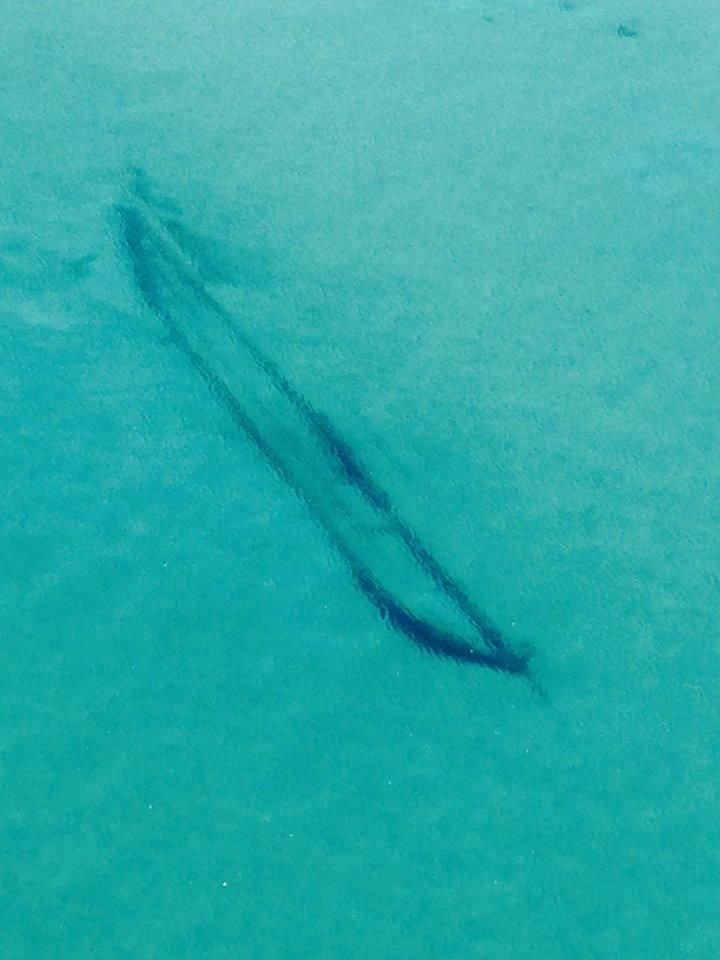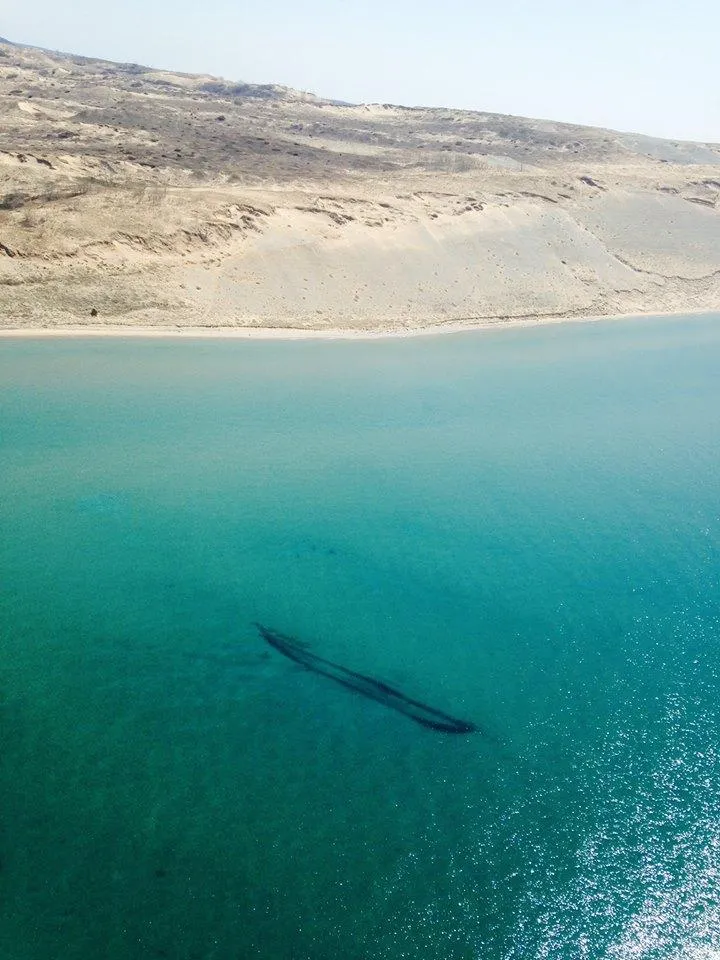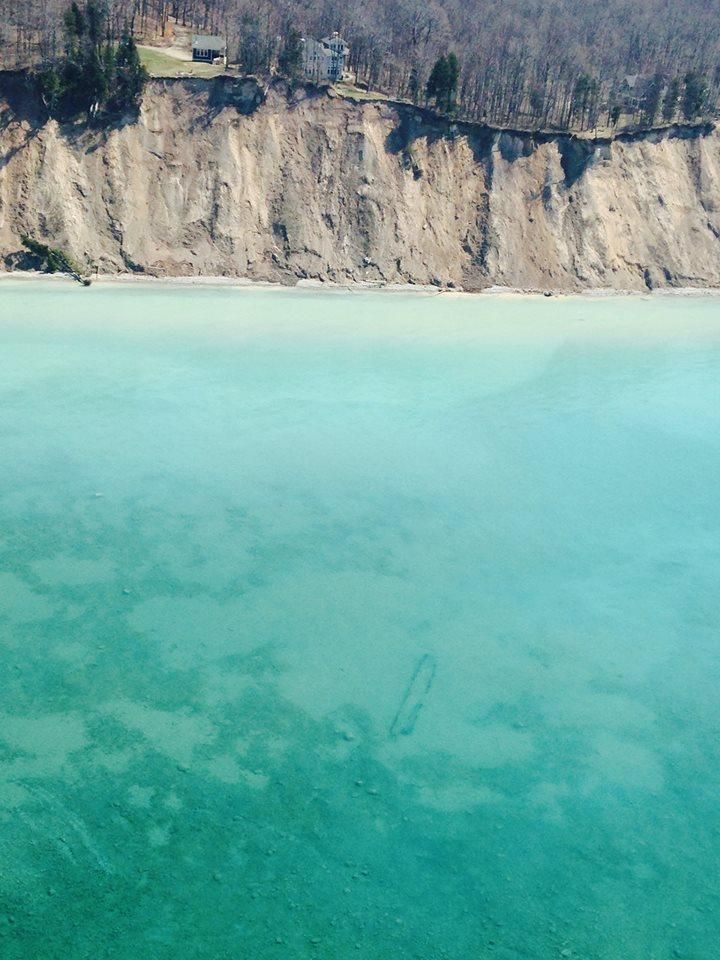In 2015, Lake Michigan Was So Clear Its Shipwrecks Were Visible From the Air
A Coast Guard patrol spotted the wrecks in shallow waters that are only clear after the lake’s ice melts and before summer sediment swirls and algae blooms
/https://tf-cmsv2-smithsonianmag-media.s3.amazonaws.com/filer/2a/38/2a389bdd-c98e-4bb0-890a-1030bf10f427/rising_sun.jpg)
Though the past winter was the hottest on record, it was chilly enough on the East Coast to send seasonal sheets of ice creeping across the Great Lakes. Now that that ice has cleared with spring, Lake Michigan is clear enough that shipwrecks lying on the lake bottom can be seen from the air.
The U.S. Coast Guard Air Station in Traverse City noted the crystal clear water conditions and the lost ships during a routine patrol. Last week, they posted a handful of pictures to their Facebook page. The images come from the area near Sleeping Bear Point known as the Manitou Passage Underwater Preserve, which is "one of the richest areas in Michigan for shipwreck diving," according to the preserve’s website. The lumber industry put the area on a shipping route. The North and South Manitou Islands, just north of the point, provided a somewhat sheltered area for ships hiding from storms.
Susan Cosier, writing for On Earth, reports:
Not much is known about most of the wrecks, but they do include one doomed vessel, the James McBride, which was thought to be the first to carry cargo from the Atlantic Ocean to Lake Michigan in 1848. Facebook commenters helped fill in some of the blanks, but most the historic details are still, well, watery.
The Coast Guard Air Station added what information people could dredge up from the depths of the Internet to their descriptions of each of the photos, but of the five ships they posted, three remain unidentified.
For NPR.org, Bill Chappell reports that spotting wrecks from the air is "fairly common," according to one of the pilots on the patrol, Lieutenant commander Charlie Wilson, "but not in the numbers we saw on that flight." Chappell also notes that the Michigan Department of Environmental Quality writes, "An estimated 6,000 vessels were lost on the Great Lakes with approximately 1,500 of these ships located in Michigan waters."
Other wrecks in the Manitou Passage include The Francisco Morazan, an ocean-going freighter driven aground during a snowstorm on November 29, 1960. The Morazan sank right on top of the remains of the Walter L. Frost, a wooden steamer lost on November 4, 1903. Both wrecks are in shallow water just a few hundred yards from shore, the preserve’s website reports.
Like other Great Lakes, Lake Michigan endures algal blooms fueled by agricultural runoff. Warmer temperatures will likely nurture the blooms and obscure the wrecks this summer, making these views particularly rare.




